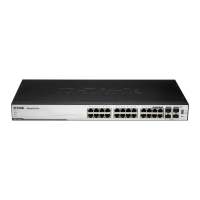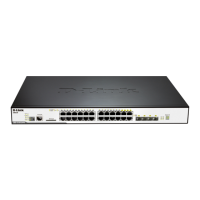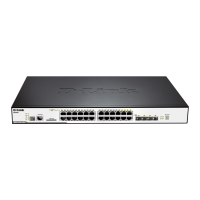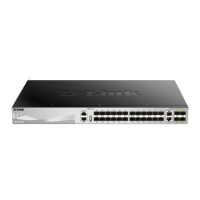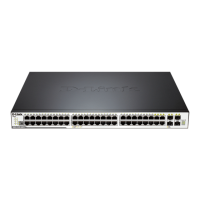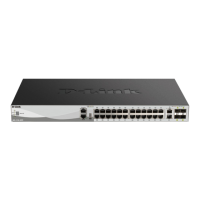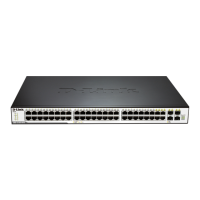DGS-3100 Series Gigabit Stackable Managed Switch User Manual
Figure 0–26. Multicast Filtering Mode Page
The Multicast Filtering Mode Page contains the following fields:
Field Description
Unit
Defines the stacking unit number to specify a port range, or LAG to specify a LAG range.
From Port or From LAG Defines the first port or LAG in a consecutive sequence of ports or LAGs.
To Port or To LAG Defines the last port or LAG in a consecutive sequence of ports or LAGs.
All
Specifies that the filtering mode applies to all ports or LAGs.
Filtering Mode
Defines the multicast filtering mode for unregistered Multicast groups. The possible field
values are:
Filter Unregistered Groups — Filters unregistered Multicast groups.
Forward Unregistered Groups — Forwards unregistered Multicast groups. This is the
default mode.
2.
Define the Unit and Filtering Mode fields.
3.
Select either All or specify a port (LAG) range in the From Port (From LAG) and To Port (To LAG) fields.
4. Click
.The Multicast filtering settings are applied to the ports (LAGs), and the device is
updated.
Defining DLF Filtering
The Destination Lookup Failure (DLF) filtering mode allows the user to define egress filtering for unknown unicast packets.
Once an egress port is set to filter/forward DLF packets, DLF traffic on all the VLANs will be configured to filter/forward
DLF packets.
The DLF Filtering Mode Page allows users to specify DLF filtering per port or globally and define the required filtering
mode. By default, the DLF filtering mode is defined as forwarding which causes packet flooding as opposed to packet
filtering which minimizes traffic within the network.
1. Click L2 Features > Forward & Filtering >DLF Filtering Mode. The DLF Filtering Mode Page opens:
103
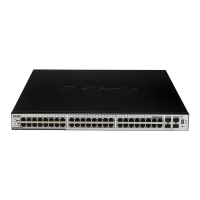
